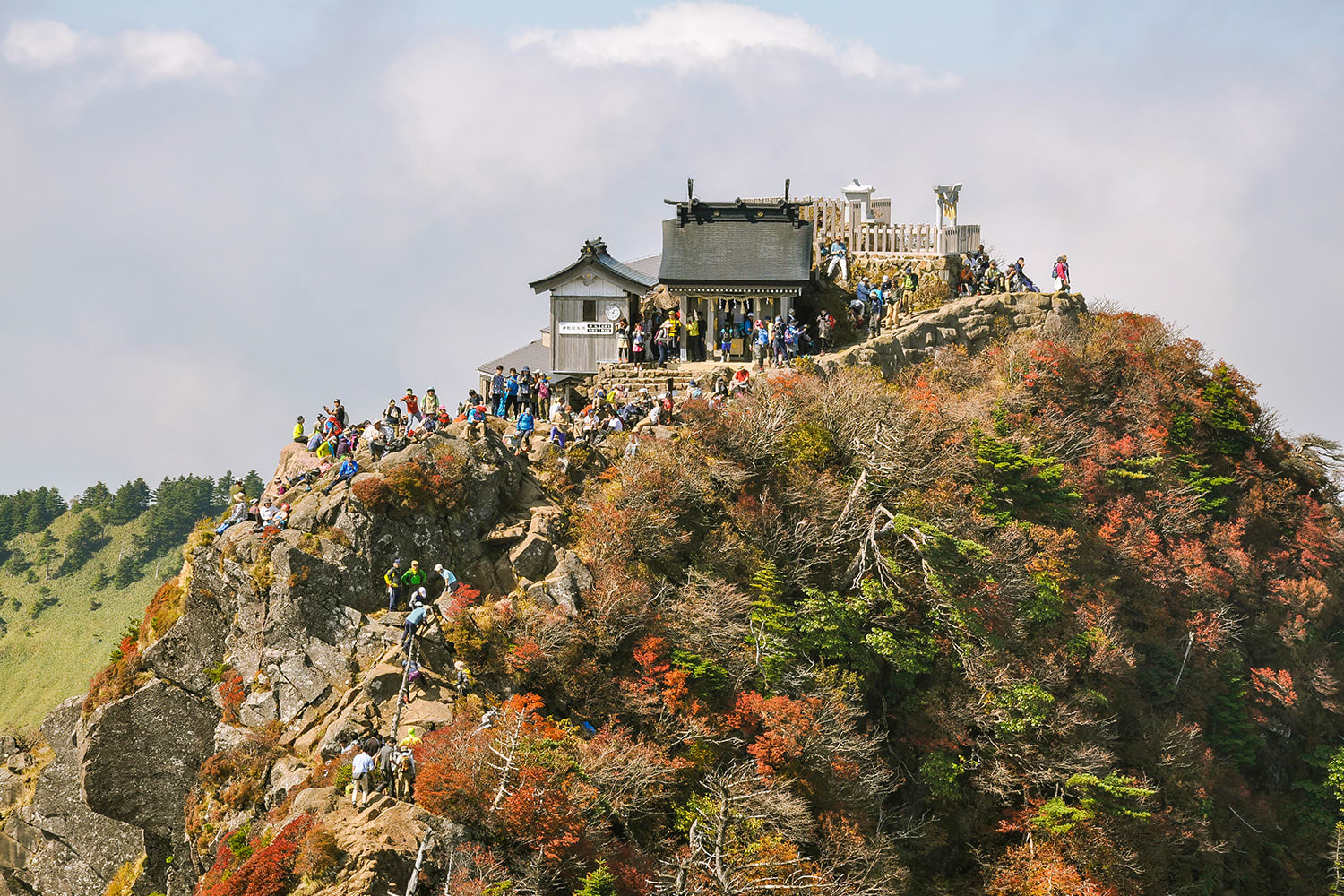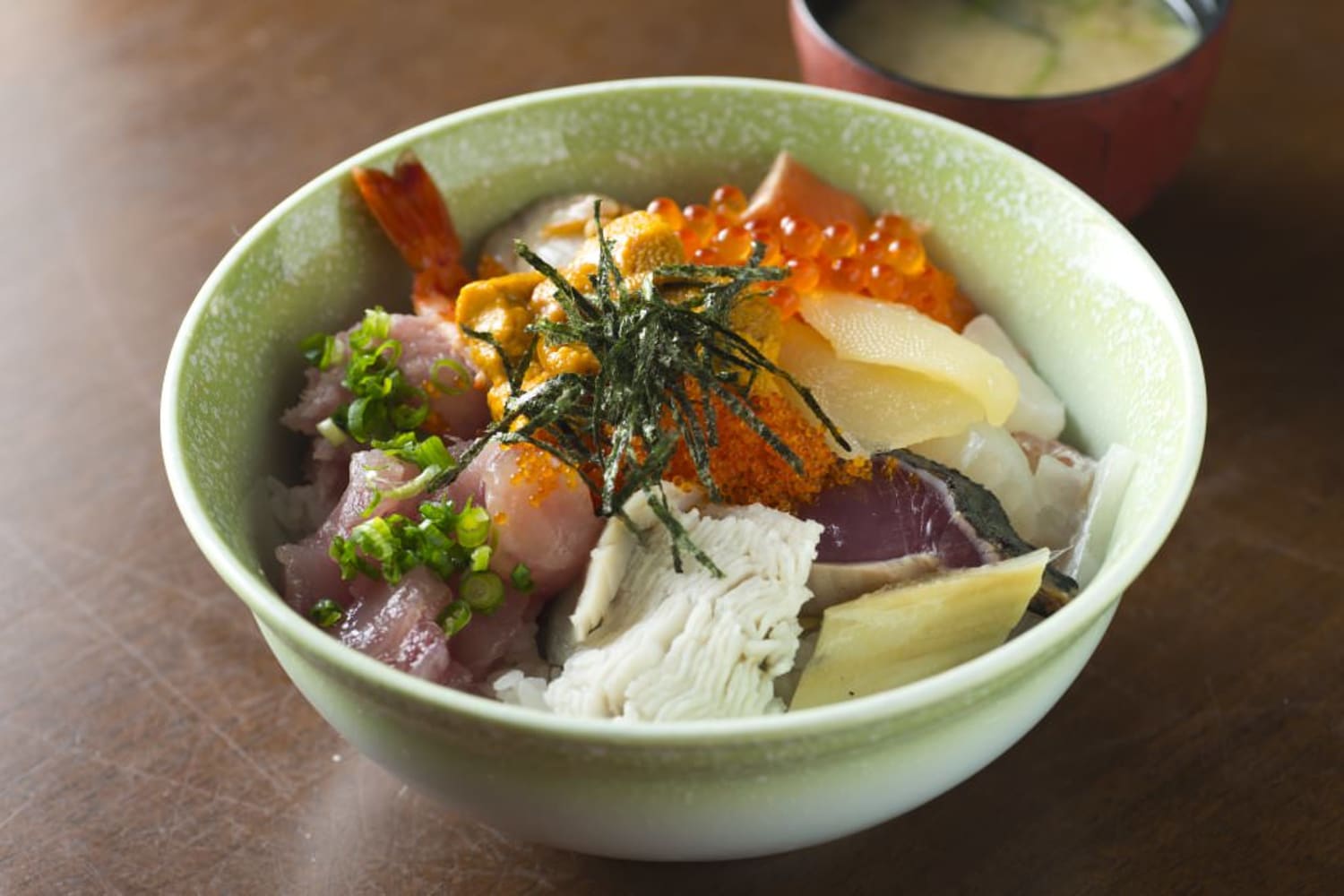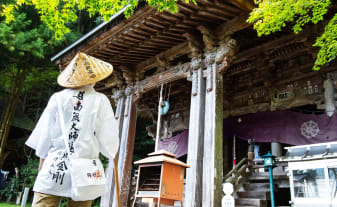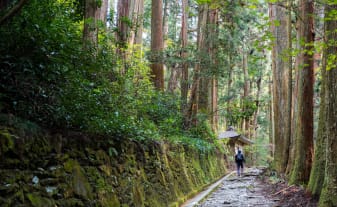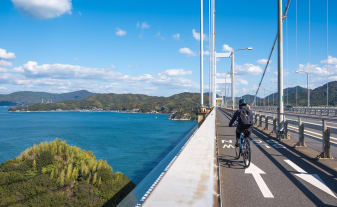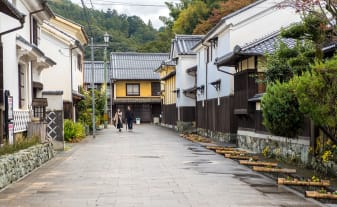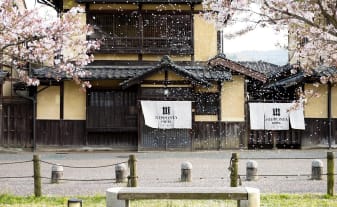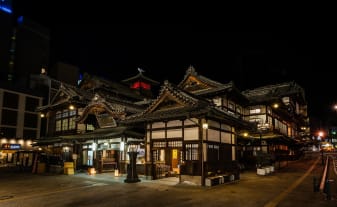 STORIES & GUIDES
STORIES & GUIDES
5 Days in Ehime: Find your next Japan adventure here!

The Japanese archipelago consists of several islands, including Hokkaido, Honshu, Shikoku, and Kyushu. Ehime Prefecture is located in the northwestern part of Shikoku. To the north of the prefecture is the Seto Inland Sea, also known as the Mediterranean Sea of Japan, and to the south are the Shikoku Mountains, which includes Mt. Ishizuchi, the highest mountain in western Japan with an altitude of 1982m. Kevin Kato, who was born and raised in the United States, but has been living in Japan for past 20 years, traveled to Ehime, which is abundant with beautiful nature, and summarized his 4-night, 5-day trip in his travelogue.
-
[Day 1] Cycling the Shimanami Kaido: Stunning Views of the Seto Inland Sea & Unforgettable Food
We began this journey by renting a bicycle from the Sunrise Itoyama Cycling Station. We rode passed the Kurushima Kaikyo Bridge to the Roadside Station Tatara Shimanami Park, where a monument commemorating the "cyclist's sanctuary", the Shimanami Kaido expressway, is located. After that, we headed to the Oyamazumi Shrine, where many historical weapons and armor are preserved, to experience the history of Japan. Then, we had lunch at the Seafood Restaurant Tairyo, where we enjoyed a bowl of fresh seafood and rice. To top it all off, we also had some local beer at Omishima Brewery.
-
[Day 2] Paddling Pirate Waters and Enjoying the Fruits of Ehime
Under the guidance of an instructor, we took to stand-up paddleboarding (SUP) and headed to an uninhabited island off the coast of Ehime, enjoying the sea breeze of the Shimanami region. The island is where the Amasaki Castle was built in the 7th century, and where its stone walls still remain today. Afterwards, we had lunch at WAKKA, where we had stayed the night before, and ate their special keema curry. We also visited a winery on the island. That night, we stayed at the luxurious TOBE Auberg Resort, and where not only are the dishes locally sourced, but also the drinks, tableware, and even the furniture.
-
[Day 4] The Art of Traditional Living in Ehime
At the Uwa Rice Museum, which is housed in a former elementary school building, we raced down a 109m corridor while cleaning the floor with a rag. In the streets of Unomachi, we saw traditional Japanese wooden architecture. At the former ryotei restaurant Kyu Musashi, rice was cooked in a traditional kamado stove and we were able to experience the old-fashioned way of life. Then, we also saw how to make pearl accessories and flag banners, and finally stayed at the Kiya Ryokan, which is a restored building with over 100 years of history. We talked with the manager, Mr. Greb, about tourism in Ehime.
-
Splashing and sliding, the best canyoning destinations
Ehime’s rivers provide ample opportunity for adventure, through canyoning, an exhilarating sport that involves wading, swimming, sliding, and climbing to navigate downstream through a river gorge.
Nametoko Gorge, in the mountains east of Uwajima, is one of Japan’s leading canyoning destinations. Local tour operators offer full- and half-day canyoning excursions. Depending on the tour and your level of experience, you may get to swing from a rope into the base of a small waterfall or form a human chain to slide down a natural chute of granite.
Omogo-kei Gorge offers more relaxed canyoning experiences. The change in elevation through the gorge is smaller, allowing canyoners to take in the surrounding rock formations and waters at a more leisurely pace. The slow flow of the water and shallow pools that form between the wide smooth rocks make it ideal for families and anyone new to the sport. -
[Day 5] The Varied Culture of Uwajima and the End of My Ehime Adventure
On the final day, we visited Uwajima Castle, one of twelve remaining castle towers from the Edo Period (1603-1867). The moss-covered stone walls that were built hundreds of years ago had an overwhelming presence. Afterwards, we tried out harvesting mandarin oranges, or mikan, a local specialty of Ehime. At a regional restaurant, Hozumitei, we tried Uwajima-style taimeishi, a kind of dish made with local sea bream. The last part of the trip was a canyoning trip in Nametoko Valley. It was a thrilling activity, as we slid down a natural water slide while shouting.
-
Scenic Views
-
Outdoor Adventure
-
Cycling
-
Castles
-
Top Attractions
-
Cultural Experiences
-
Eastern Ehime (Toyo)
-
Central Ehime (Chuyo)
-
Southern Ehime (Nanyo)

